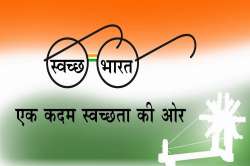WHO acknowledges Swachh Bharat mission, says it could help avert over 3 lakh deaths
WHO further noted that India's commitment and progress towards the outcomes are reflected in the fact that household sanitation coverage has dramatically increased from an estimated two per cent per year before the initiative to more than 13 per cent annually between 2016 and 2018.

Acknowledging the Swachh Bharat Mission, World Health Organisation on Saturday said that if India remains committed to achieving 100 per cent coverage in terms of safe sanitation services by October 2019, as many as 3,00,000 deaths caused due to diarrheal disease and protein-energy malnutrition (PEM) since the country launched the initiative in 2014 can be averted.
According to the results tabulated from a WHO modelling study on the health impact of the Swachh Bharat Mission-Gramin (SBM-G) outline, India's accelerated coverage of safe sanitation services and its determination to end open defecation will have a substantial effect on the burden of diarrheal disease and PEM by reducing mortality and accumulative Disability Adjusted Life Years (DALYs) - the sum of the years of life lost due to premature mortality and years lost due to disability or ill-health. As per calculations, if all sanitation services are used, the initiative could result in over 14 million more years of healthy life in the period measured, with the benefits accruing yearly thereafter.
WHO further noted that India's commitment and progress towards the outcomes are reflected in the fact that household sanitation coverage has dramatically increased from an estimated two per cent per year before the initiative to more than 13 per cent annually between 2016 and 2018.
Acknowledging measures taken in collaboration with the Centre to scale up access to sanitation services and to utilise resources more efficiently to reach those under threat of being excluded, the WHO said India's pursual of South-East Asia's Flagship Priorities and the Sustainable Development Goals, will oblige countries to ensure access to safe water and sanitation for all, and commended India for the commitment.
The broader health impact of India's commitment to accelerated sanitation coverage, the WHO said, are likely to be significant. This includes improved overall nutritional status and reduced incidence of infectious diseases such as neglected tropical diseases and acute respiratory infections, as well as vector-borne diseases.
WHO's South-East Asia Region comprises the following 11 Member States: Bangladesh, Bhutan, Democratic People's Republic of Korea, India, Indonesia, Maldives, Myanmar, Nepal, Sri Lanka, Thailand and Timor-Leste.